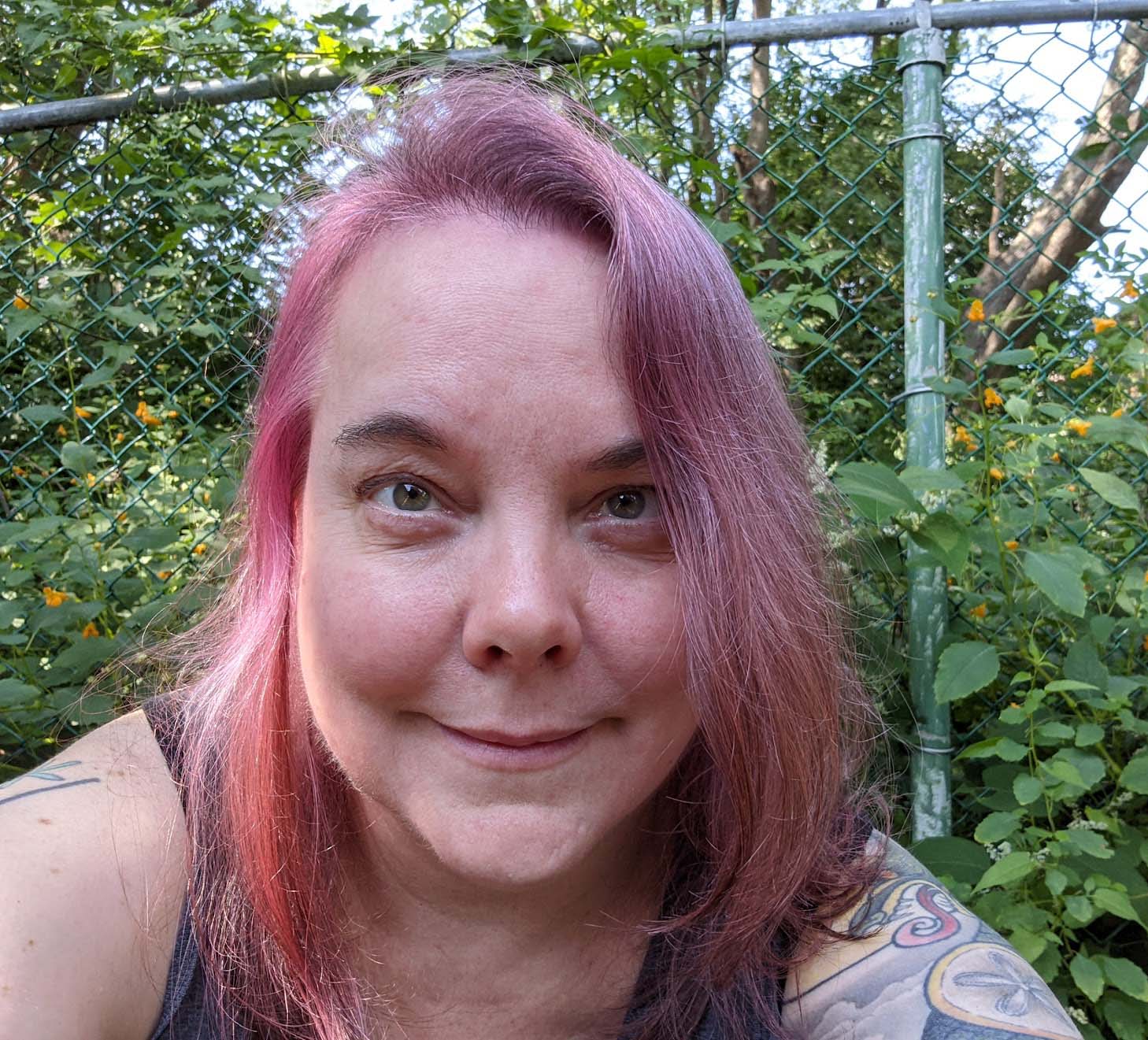I recently gave a keynote talk at the 6th Annual Medical Symposium on Human Trafficking, a combined effort by the Virginia Commonwealth University School of Medicine and ImPACT Virginia, a nonprofit that helps victims of human trafficking. The purpose of the symposium is to address the knowledge gap of medical staff who lack awareness and training, which leads to an inability to recognize victims accessing medical care while they are simultaneously being trafficked. As part of their training, the students visit incarcerated victims of human trafficking to teach them about preventative health care, communication, and complex trauma. My role was to talk about trauma-informed care from the patient’s perspective. Fay Chelmow, the head of the nonprofit who runs the symposium and teaches a class on providing medical care to victims, contacted me after reading a blog post I wrote for the CPTSD Foundation about experiencing medical trauma as someone living with CPTSD.
A years-long quest to get fibroid tumors and endometriosis addressed culminated in me being bedridden with chronic pain for two years while I sought care. The pandemic made this quest much more complicated: one ob-gyn told me that I couldn’t possibly feel pain from a few pounds of tumors and elective surgery was closed in hospitals around the country. As a result, the waiting felt endless. I found help in an area hospital that came highly recommended. Surgery was scheduled and then delayed repeatedly as COVID infections thinned OR staff. A common pain medication was prescribed to hold me over. Unfortunately, I was one of a tiny percentage of people who had a toxic reaction to it, which led to several trips to the ER. Because of the way this pain med affected my nervous system, the effects on my cognitive state were devastating. Upon learning I have CPTSD, one ER doc told me I was simply having a panic attack and needed to go home and calm down. The outcome was nearly fatal. Fortunately, the problem was recognized in another hospital, and, weeks later, I finally had the surgery I needed. But the whole saga left its mark on me. Though my childhood trauma is like an old enemy, since I’m familiar with it and know its patterns, this new medical trauma is still unpredictable and takes me off guard on a regular basis.
Once I recovered from surgery, I wrote about the experience for the CPTSD Foundation blog, and Fay reached out with an interesting offer. Over the course of a year, I worked with her on developing a curriculum for her students that provides an explanation of CPSTD, the range of medical problems that come with it, and ways to work with patients who live with it. She then presented me with a big honor: Would I do a three-hour interactive session at her symposium that not only educates students about complex trauma, but also helps them share resources with the people they’re working with?
It was an opportunity to share everything I’ve learned in somatic experiencing programs, cognitive behavioral therapy, books, and medical journal articles about trauma. My experiences reflected what many people in online mental health communities I’m active in have also experienced—there were stories about not being taken seriously about health concerns, along with many similarities in how physical symptoms manifested in the form of chronic pain and a variety of medical conditions.

Key takeaways from my talk at the symposium included the following:
- It’s not all in your head. Complex trauma is the root cause of many ailments, including asthma, cardiac and digestive conditions, diabetes, chronic pain, and more. A dysregulated autonomic nervous system is at the core of CPTSD.
- Heart rate variability is out of sync in people living with CPTSD, which results in a range of health problems. (1)
- Women who experienced sexual abuse as children are 79% likely to develop endometriosis and other pelvic conditions. (2, 3)
- The perimenopausal transition can last longer and vasomotor symptoms such as hot flashes are more severe for those with CPTSD. As estrogen levels dip, the symptoms of CPTSD worsen. (4)
- New research shows that, unlike regular memories that are organized and contextualized in the hippocampus, traumatic memories are encoded in the posterior cingulate cortex, which is involved in internally directed thought. It’s ever-present and has a disruptive effect until these memories can be properly processed. (5)
- A growing number of studies suggest that people with mental illness experience more severe effects from COVID-19. Because the autonomic nervous system is dysregulated, the effects of COVID-19 can cause further damage in the form of dysautonomia, which leads to disruptions in blood pressure and heart rate. An estimated 66% of people with Long COVID developed moderate or severe dysautonomia, and of that 66%, 80% are women. (6)
Health Equity is a Key Part of the Equation
When looking at the broader picture of health care, trauma-informed care needs widespread practice. People with chronic conditions often experience bias and long delays in getting diagnoses. Chronic pain causes a neurological reaction that can become traumatic on its own. It takes an average of ten years to be diagnosed with a rare disease, and the average is about the same for endometriosis. This lengthy process can be exhausting and stressful for patients and caregivers alike. Trauma-informed care must be centered in health equity efforts.
Furthermore, providers should recognize racial, gender, cultural, socioeconomic, and historical biases that may prevent truly listening to people. Racial- and gender-based biases have been embedded in how medicine has been taught and practiced for generations, and while health equity is a trendy topic today, progress has been slow. For example, since women were historically excluded from clinical trials and are still underrepresented in research, women’s healthcare has been limited as well.
What Trauma-Informed Care Looks Like
- In today’s for-profit-driven healthcare model, time is short and precious. The fragmentation of specialties and primary care can make it difficult to put all the pieces together. In my experience, individual symptoms of CPTSD were identified in one specialty or another over the course of years, but there were few opportunities to take a step back and see how they all connected. It’s important to take a holistic view of someone’s medical history. A constellation of seemingly unrelated symptoms can form a picture of chronic stress and trauma.
- Transparency and establishing trust are vital to trauma-informed care. When meeting with patients, explain procedures in detail, especially when they involve physical contact. Share as much information as possible to ensure there are no surprises. Empower them in the decision-making process when considering treatment options.
- Living in survival mode means shutdowns can happen. We freeze up and find our voices gone, which is a function of the dorsal vagal system. In addition, our inner critics are railing at us at crucial moments, like during a medical appointment. To make the most of appointments, encourage patients to keep track of symptoms and patterns and bring their notes and questions for discussion.
- Muscle-armoring is a painful and chronic pattern of holding tension in the body. It’s a product of being stuck in survival mode and can make some examinations and tests difficult because of the stored tension. Helping patients feel safe by offering compassion and transparency can help.
- There have been commendable efforts to ask patients about their mental well-being in general appointments. Open-ended questions about personal struggles create a space for conversation and can lead to connections about the relationship between physical and mental health.
- Trauma-informed care is a need that spans mental illness, chronic pain, rare diseases, and beyond, and that need is vast. In the US, an estimated 50 million adults are experiencing a mental illness. Of the 50.2 million people who live with chronic pain, 24.4 million suffer high-impact pain that limits their ability to work. 133 million Americans have a chronic disease, and between 25 and 30 million Americans live with a rare disease. Trauma-informed care should be required in medical school and other healthcare education programs, and it should be an integral part of the system in which healthcare is practiced.
My Hope
I work in healthcare full-time, and my side gig as a patient advocate continues to grow, so I’m immersed in healthcare 24/7 now. If this work helps anyone get diagnosed more quickly than I did, or be taken more seriously than I was; if it puts anyone on a path to recovery or improves their quality of care, directly or indirectly, then I will have fulfilled one of my purposes after being diagnosed with CPTSD: to help people get the care they need and to help all medical professionals understand why trauma-informed care is essential.
Sources
1. The Body Keeps Score, Bessel van der Kolk. Penguin Books, 2014.
2. Early life abuse and risk of endometriosis. Harris, Holly R., Wieser, Freiderich, Vitonis, Allison F., et al. Human Reproduction, Vol. 33, No. 9, pp. 1657–1668. 2018.
3. Sexual abuse history and pelvic floor disorders in women. Cichowski, Sara B., Dunivan, Gena C., et al. South Med Journal. 2013 Dec.: 106(12): 675–678. Doi: 10.1097/SMJ.0000000000000029.
4. Associations of intimate partner violence, sexual assault, and posttraumatic stress disorder with menopause symptoms among midlife and older women. Gibson, Carolyn, Huang, Alison. JAMA Internal Medicine, 2019; 179(1):80-87
5. Neural patterns differentiate traumatic from sad autobiographical memories in PTSD, Ofer Perl, Daniella Schiller, et al. Nature Neuroscience, November 30, 2023
6. Characterization of autonomic system burden in Long COVID: A global survey of 2,134 adults. Frontiers in Neurology. Oct. 18, 2022. Vol 13–2022. DOI 10.339/fneur.2022.101668.
Guest Post Disclaimer: Any and all information shared in this guest blog post is intended for educational and informational purposes only. Nothing in this blog post, nor any content on CPTSDfoundation.org, is a supplement for or supersedes the relationship and direction of your medical or mental health providers. Thoughts, ideas, or opinions expressed by the writer of this guest blog post do not necessarily reflect those of CPTSD Foundation. For more information, see our Privacy Policy and Full Disclaimer.

Lee Frost has worked for nonprofits and marketing agencies focusing on healthcare for the past ten years. She’s a patient advocate and recently launched a blog about menopause and CPTSD called the Sinsemillier. She grew up in the Boston area and has a BA from UMass Boston and a master’s from Harvard Extension School. Lee lives north of Boston with her husband, where they both love to nerd out on sci-fi and fantasy.





Thankyou Lee. This is very helpful.